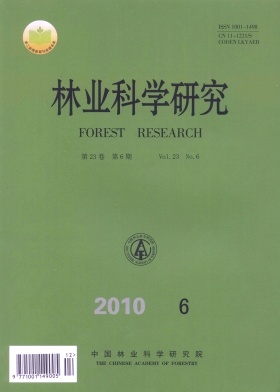Studies on Growth and Wood Property of Six Precious Timber Species
-
1.
Management General Station of Forest Seedling of Zhejiang Province, Hangzhou 310020, Zhejiang, China
-
2.
Research Institute of Subtropical Forestry, Chinese Academy of Forestry, Fuyang 311400, Zhejiang, China
-
3.
Institute of Forestry of Longquan City, Zhejiang Province, Longquan 323700, Zhejiang, China
-
4.
Experimental Forest Farm of Qingyuan County, Zhejiang Province, Qingyuan 323800, Zhejiang, China
-
Received Date:
2009-08-06
-
Abstract
The 21- to 36-year-old plantations of six precious timber species including Ormosia hosiei, Keteleeria cyclolepis, Bretschneidera sinensis, Phoebe bournei, Machilus pauhoi, and Paramecia lotungensis, which locate in Longquan and Qingyuan of Zhejiang province were selected to study the variation in growth, stem form and wood basic density. Of the six tested species, O.hosiei exhibits larger height and DBH increment, longer fast-growing period in diameter, medium wood basic density and smaller radial variation, and its annual ring width varies from 0.8 1.2 cm, whereas the heartwood proportion by ring width and area being 60.57% and 37.47% respectively. Considering the stem forking characteristic of O.hosiei, timely pruning and wiping away the buds, and appropriate fertilizing at two years after planting are necessary to produce high grade trunk wood with better stem straightness and higher heartwood proportion. The other five species exhibited less stem forking and more straight stem. Ph. bournei is famous for its excellent wood quality with medium wood density, strong growth potential, stable annual increment and narrower crown, indicating that it is more suitable for cultivating as long-period and big-diameter timber, although its growth rate is relatively slow. B.sinensis is more suitable for cultivating as good technological wood, as it exhibits medium growth rate, lower density but smaller radial variation; P.lotungensis is also an excellent precious timber specie with higher wood density and radial uniformity, though its growth rate is medium. K.cyclolepis is a coniferous tree, with fast growth rate in early period and slow rate in late, and its wood density is medium. It is proposed that the fast growing period could be prolonged and radial uniformity of wood density be improved through the enhanced cultivation management. M.pauhoi exhibits medium growth rate, lower density and wood mucous, indicating that it is unsuitable for cultivating as precious timber trees.
-

-
References
|
[1]
|
黎云昆. 论我国珍贵用材树种资源的培育[J]. 绿色中国:理论版,2005(16):24-28
|
|
[2]
|
冯建国, 周志春. 关于亚热带地区珍贵用材树种培育的几点思考[J]. 浙江林业科技, 2009, 29(1):74-78
|
|
[3]
|
侯元兆, 陈统爱. 我国结合次生林经营发展珍贵用材树种的战略利益[J]. 世界林业研究, 2008, 21(2):49-52
|
|
[4]
|
Ennos R A, Worrell R, Malcolm D C. The genetic management of native species in Scotland[J]. Forestry, 1998, 71(1):1-23 |
|
[5]
|
蔡道雄, 贾宏炎, 卢立华, 等. 我国南亚热带珍优乡土阔叶树种大径材人工林的培育[J]. 林业科学研究, 2007, 20 (2):165-169
|
|
[6]
|
浙江省林业局. 浙江林业自然资源:野生植物卷[M]. 北京:中国农业科学技术出版社, 2002
|
|
[7]
|
冯建国, 季新良, 周志春, 等. 特种经济高档用材红豆树培育技术[J]. 林业科技开发, 2007, 21(5):41-43
|
|
[8]
|
孟宪宇. 测树学[M]. 北京:中国林业出版社, 2006:31-31
|
|
[9]
|
Smith D M. Maximum moisture content method for determining specific gravity of small wood samples, Rept. No. 2014 . Madison: Forest Products Laboratory, USDA Forest Service, 1954 |
|
[10]
|
Panshin A J, De Zeeuw C. Textbook of Wood Technology [M]. 4th ed. New York: McGraw-Hill Book Company,1980 |
|
[11]
|
李建民. 马褂木地理遗传变异和优良种源选择[J]. 林业科学, 2001, 37(4):41-49
|
|
[12]
|
张经一, 赵学海, 张海涛, 等. 人工红松林杈干形成与控制研究——Ⅲ杈干的综合控制[J]. 林业科技通讯, 2000, (4):6-8
|
|
[13]
|
刘青华, 金国庆, 张 蕊, 等. 24年生马尾松生长、形质和木材基本密度的种源变异与种源区划[J]. 林业科学, 2009, 45(10):55-61
|
-
-
Proportional views

-





 DownLoad:
DownLoad: